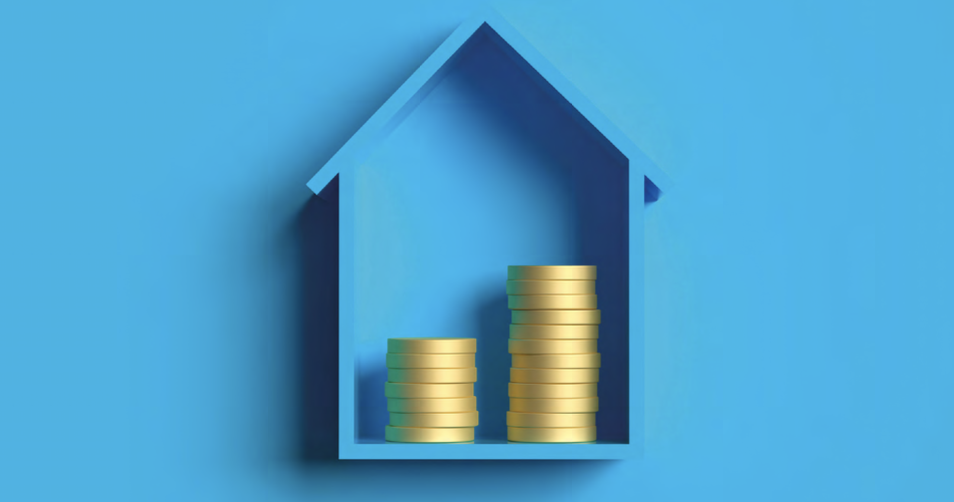By Olev Edur
Whether a reverse mortgage is right for you depends on your situation
It’s a question usually asked at some point by retirees who are house-rich and cash-poor but don’t want to move: should I consider taking out a reverse mortgage? And for many, this may indeed be a good way to leverage the value of their home; for some, it may be the only option.
But these arrangements are definitely not for everyone, and many financial advisers suggest that they be considered only as a last resort. The main reason, as we’ve noted in past issues of Good Times, is that reverse mortgages can be expensive. How- ever, these costs have been coming down in recent years.
So what exactly is a reverse mort- gage, what are the pros and cons, and what, if any, are the alternatives? A reverse mortgage is essentially a loan against the equity value of your home but with some unique features. For one thing, you don’t have to make any payments on the loan as long as you own the home. On the other hand, the accumulating interest is added to your debt.
The money you receive from a re- verse mortgage is tax-free and doesn’t affect your entitlement to income- geared benefits such as Guaranteed Income Supplement (GIS). You can spend the money any way you want—to supplement your income, pay medical bills, or take that dream vacation.
When the house is sold or you pass on, the loan plus accrued interest must be repaid, although the repay- ment will never exceed the value of your home. And you can never be kicked out of your home, regardless of how big the debt grows.
Restrictions
There are restrictions on who can get a reverse mortgage and on how much money you can borrow. First, you must be aged 55 or older. (If you own the house jointly with a younger spouse or perhaps a child, you won’t qualify.) Reverse mortgages apply only to principal residences, and a minimum amount of owner equity is required.
You can borrow no more than 55 per cent of the home’s value, but the actual limit will depend on your (or your spouse’s) age, your financial circumstances, your home’s value, loca- tion, and type of structure, and your choice of reverse-mortgage lender. “It’s important to note that 55 per cent is the maximum,” says Mich Sneddon of Reverse Mortgage Pros in Toronto and the author of The Ultimate Reverse Mortgage Guide. “The range is 10 to 55 per cent, but the average is around 30 to 35 per cent. So, for example, the most you’d see someone aged 55 years old qualify for is around 25 per cent. To qualify for the full 55 per cent, you need to be closer to 80 years old.”
In addition, since the issuer wants first dibs on future home-sale proceeds, any existing mortgages or home-equity loans must be discharged—with the reverse-mortgage proceeds if necessary. “This is so the lender has a ‘clean’ claim to title,” Sneddon says.
Once approved, you can choose to receive your funds in different ways—as a single lump sum, individ- ual payments, or regular income, or a combination thereof. Interest is levied only on amounts advanced, and options are available for making partial repayments if desired. These terms vary depending on the lender.
The Real Cost
The big knock on reverse mortgages traditionally has been that they are expensive—interest rates have ranged three or four per cent above regular mortgages and two or three per cent above home-equity line-of-credit (HELOC) rates. As noted, though, the differential has been shrinking lately and can be as little as one or two per cent, depending on the province and the vendor.
“Right now, HELOC rates are ac- tually higher than reverse-mortgage rates,” Sneddon says, but he adds that this may change because HELOCs are variable-rate loans; if rates go down (as is expected in the near future), they will again cost less than reverse mortgages, which are fixed-rate term loans.
There are also up-front costs, as is the case with regular mortgages and to a lesser extent HELOCs. According to Sneddon, property appraisal costs, independent legal advice, and admin- istrative/set-up costs can run to be- tween $2,000 and $3,000, although most of these costs can be covered by the loan. “The average is about $2,300,” he says. In addition, there may be costs involved in discharging any existing debts, and there may be penalties if, down the road, you decide to sell the home mid-term.
As for those lifetime guarantees, they may sound good, but in reality they’re of little value to most borrow- ers. “Most lenders say six to eight years is the usual duration [that a re- verse mortgage is kept], but this can vary by location,” Sneddon says. “On average, urban homeowners tend to hold reverse mortgages for a shorter period and rural homeowners tend to hold them longer.”
Similarly, the absence of monthly payments may seem convenient, but you’re still paying—the interest is simply added to the growing loan balance. To counter this, you could set aside part of the loan and instruct your financial institution to make automatic payments.
Alternatives
The bottom line is that under most circumstances, a reverse mortgage will cost you more than a regular mortgage or a HELOC, but for retirees with low incomes, it may be the only option. This is because traditional lenders will base loan eligibility on income. As a result, the ideal solution would be to arrange a mortgage or HELOC before you retire.
The problem with a mortgage, too, is that you must borrow and pay interest on the entire amount and the up-front costs will be as high as those of any reverse mortgage. A HELOC will be less expensive to set up, and you need pay interest only on amounts actually borrowed, but the interest rate will be higher than that for a mortgage (and, again, perhaps higher than that for a reverse mortgage at present).
The best solution, prior to retirement, may be to arrange for a “collateral charge.” This is essentially an overall credit basket containing both a mortgage and a HELOC component based on going interest rates; as the mortgage is reduced, the HELOC grows. Once struck, the arrangement is permanent and need never be renewed, although rates may be adjusted periodically based on changes in prevailing rates.
Alternatively, if you’re only looking for a smaller bridging loan, perhaps $10,000 or $20,000 to pay for that dream cruise or meet unexpected needs, a short-term regular loan may be a better solution because, although the interest rate is higher, up-front costs are minimal.
The bottom line is that the solution depends on your actual needs and circumstances, so it’s important to explore all your options—and all the attendant costs and benefits—before committing to any particular arrangement. And, since these can be complex financial arrangements, independent legal as well as financial advice is essential.






